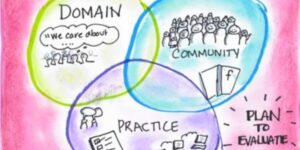Bottom-Up Leadership And Digital Skills Training
A well-run business is like a car cruising down the highway. The road may not always be even, but the machine is designed to withstand
A well-run business is like a car cruising down the highway. The road may not always be even, but the machine is designed to withstand

Digital communities: Why are they a challenge for businesses to create and maintain? How can enterprise organizations up their community game?
There are thousands of them: Strategists, Specialists, Editors, Coordinators, Contributors, Community Managers. And that’s just in California. When you search for “social media jobs” on Indeed,
Thanks to a new set of location-based mobile applications that have cropped up over the past year, our social interactions online are beginning to impact our real world lives in very real ways. Here’s how they work now: